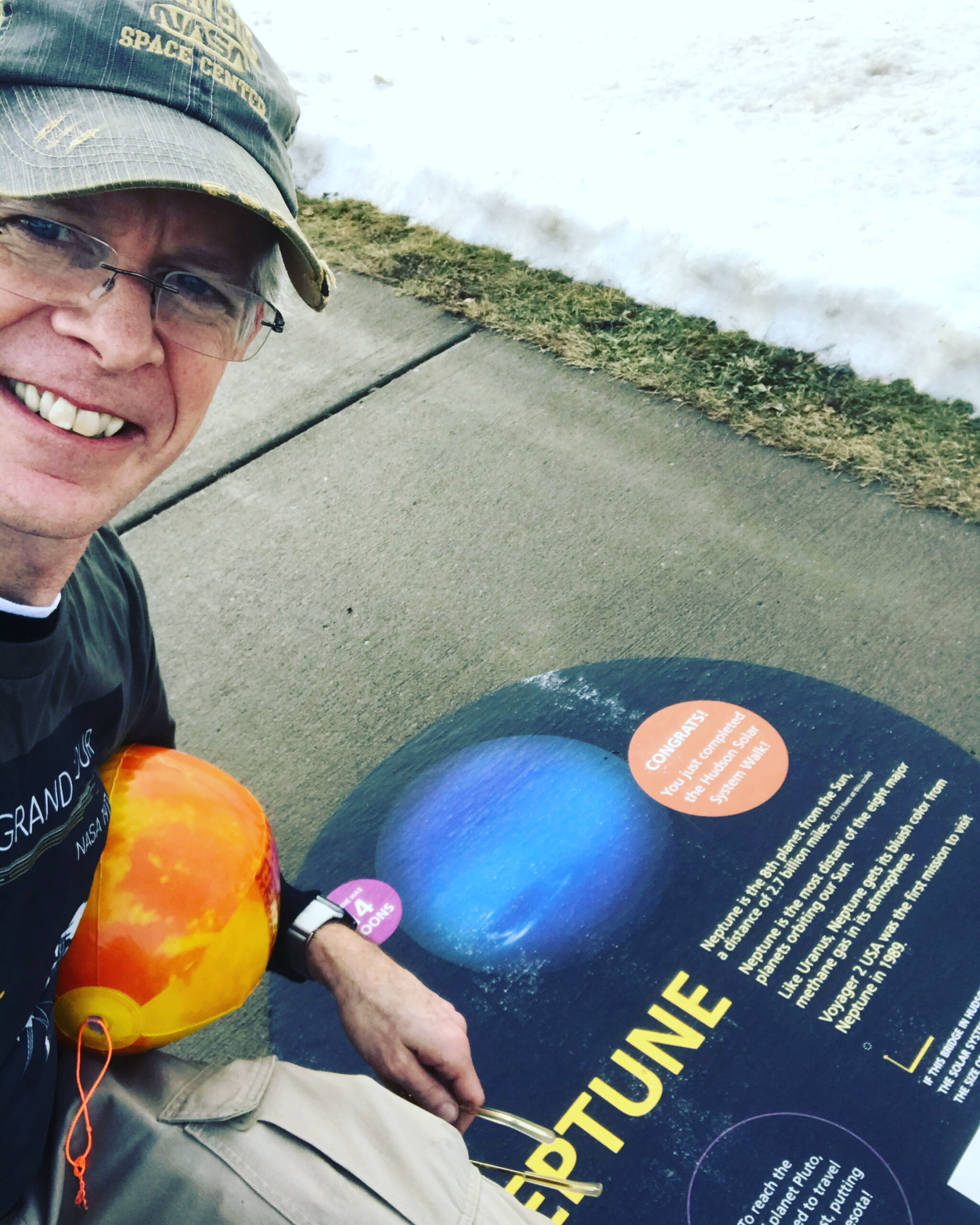
Written by Valerie Marshall, Community Library Manager, Broward County Library
I have been offering Science, Technology, Engineering, and Math (STEM) related programs to the general public in science museums, continuing education classes, and libraries for over a decade. Many of my library customers call me “The Space Lady” because I have a telescope and a picture of an astronaut in my office, and I’m always encouraging my customers to check out telescopes or come to my STEM programs. Through these experiences, I have learned how to put together successful STEM public programs, and I’d like to share some of my strategies with you here.
Showcase Library Resources
Most library staff already know that making a table display of materials related to your program available for patrons to check out is best practice. Unfortunately, this practice doesn’t add to the content of the program. That’s why, in addition to a table display, I like to start or end my programs by using a projector to show customers how to access and use the library catalog, a library database, e-book platform, or app to find more information about the topic at hand. I also sometimes showcase resources from the American Library Association’s list of Best Digital Tools for Teaching and Learning.
Add STEM to Existing Programs
If you already have a dedicated audience for successful public programs and you want to see who may be interested in STEM content, slip some STEM into your existing programs. During story times I try to incorporate non-fiction books, recordings of real animal sounds instead of the common animal sounds we sing in “Old Macdonald Had a Farm,” and real pictures of animals instead of cartoon animals in between books. During English classes for non-native speakers, I have included STEM related news articles into the current events we read and discuss, a great tool for building common STEM vocabulary that isn’t often used in this type of class. For after school activities, I remind customers that what we are doing is STEM, even if they don’t realize it. For example, when I have kids decorate cupcakes I talk about “What Happens When We Mix Colors.” You don’t have to be an expert in a STEM subject to mention how these activities are related to STEM, and STEM doesn’t have to be the main focus of your program for the content to be impactful.
Pick a Theme
If you find a STEM experiment you really want to use as part of a program, but that activity only takes 5-10 minutes to complete, figure out the central theme of that activity and do a search for other, related STEM or non-STEM activities. For example, if you really want to do an activity with solar beads, such as “UV Kid,” maybe your theme can be about the Sun and you can also do experiments about solar energy or photosynthesis. Or you can choose a theme related to the different seasons, and this will be your summer related experiment. You could even have different jewelry making stations and use this as one of the stations. It’s important to remember to think outside the box, and remember that a STEM activity in no way limits you to a completely STEM focused program.
Host Different Activity Stations/Sessions
Hosting a program with different activity stations is my favorite way to showcase STEM experiments. You can either do this with a theme in mind as mentioned in the section above, or you could host a STEM Day event with Science, Technology, Engineering and Math activities that are completely unrelated to each other. For the past 5 years I have been the Project Manager for Broward County Library’s Science Fair Fest. When this event was in-person (pre-COVID-19), it was designed as a scavenger hunt where customers would visit at least 5 different STEM activities to get a prize. We showcased STEM experiments that were completely unrelated in order to appeal to the broadest audience possible. Our activities included flying microdrones, looking through solar telescopes, programming robots, and attending a lecture about sea turtle research. For the past 2 years we have hosted this event online, again with unrelated STEM topics for different age groups to appeal to a wide audience . Hosting different stations/sessions tied together by a STEM theme has been very successful, and our annual Science Fair Fest has even won an award in 2021 using this approach.
Recruit a Subject Matter Expert (SME)
If you or your staff are not yet comfortable with leading STEM activities or acting as a Guide on the Side, I encourage you to reach out to the experts in your community. If you find a chemistry experiment you really want to try, reach out to the chemistry teachers at your local high schools/colleges to see if they will do a presentation at your library and help lead the experiment. Do you have a safe outdoor space where you can see the starts at night? See if the Night Sky Network can connect you with a local astronomy group to bring telescopes to your library. There might even be a NASA Solar System Ambassador near you with a presentation already prepared – you don’t even need to think about the topic yourself. You can even request an Astronaut Appearance from NASA – virtual or in person. Many STEM organizations and businesses are looking for ways to reach their community the same way you are, and they often will do a program free of charge because the library is the perfect bridge between the general public and an expert needing an audience.




Leave A Comment